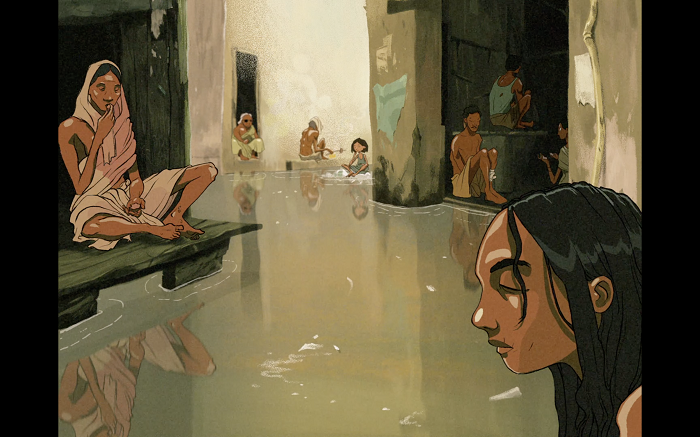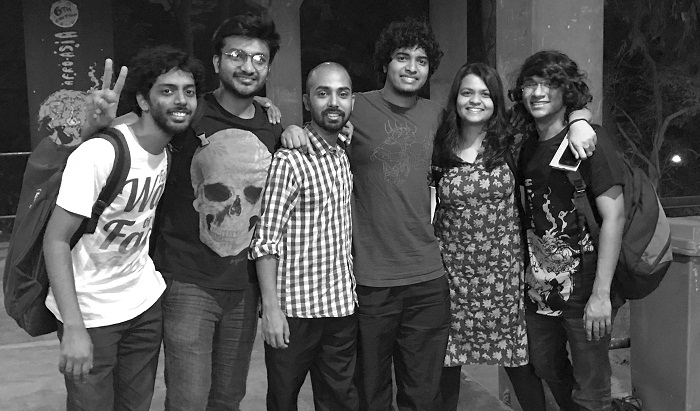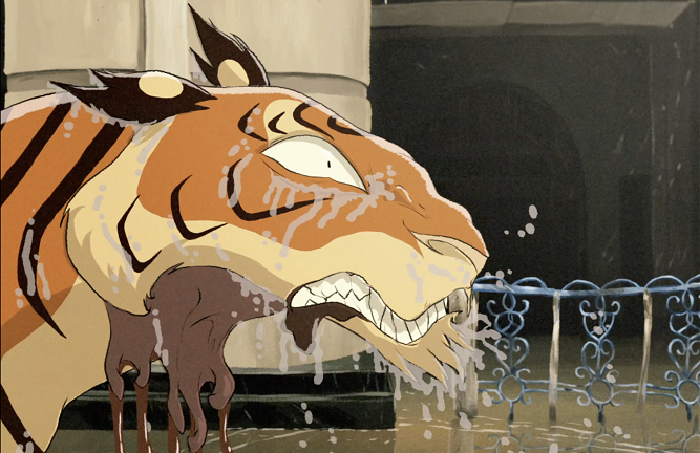On the South-easternmost tip of India, between the sea and the plains of Bengal, lies an enclave of islands- the Sundarbans, one of the natural wonders of the world. Getting its name from one of the mangrove plants known as Sundari, the Sundarbans are a part of the world’s largest delta formed by the rivers Ganges, Brahmaputra and Meghna.
Covering a vast area of 4262 square kms. in India alone with a larger portion in Bangladesh, Sundarbans house a wide range of elusive flora and fauna. Containing the world’s largest coastal mangrove forest, most of it is a lowland area.

With drastic climate change and global-warming on the rise, future of such low lying areas stand on the borderline of receiving huge natural threats. Wade, an upcoming animated film by Ghost Animation Collective, showcases a climate change nightmare set in Kolkata, few years hence, ravaged by sea level rise, where a group of humans and an ambush of tigers face off on the flooded streets.
Directed by a group of animators based out of Kolkata, this animated piece is almost like a warning signal about the fierce outcome of taking the environment for granted. The directorial team consists Upamanyu Bhattacharyya, Anwaar Alam, Deepti Sharma, Gaurav Wakankar, Kalp Sanghvi, Nikunj Patel, Saket Ghaisas, Shreeya wagh and Sarath Ravishankar.

In a conversation with AnimationXpress Sanghvi mentions, “Wade taps into tangible deep-rooted fears that we have. Climate change is a reality, and so are its effects. Low lying areas like Kolkata, the Sundarbans and more will soon be underwater: it’s a scientific certainty. There’s plenty of literature around this, presenting evidence that surrounds us.”
Slated to be released online and at different festivals, by the end of the year, this 10 minute long film was in a way encouraged by Amitav Ghosh’s The Great Derangement in the way it validated a lot of its narrative.
Talking about the choice of setting for the film, Bhattacharyya said, “It’s personal, and we felt that setting it in a very identifiable Kolkata would speak much louder than a fictional location. We’re from here, the problem exists here and so the film hopefully has a degree of honesty. The sea-level has risen and the ice-caps have melted leaving no options for the residents of Kolkata to abandon the city. The Sundarban dwellers who couldn’t, have migrated to the city, but so have the tigers.”

The film is quite unique and realistic in terms of its animation techniques and treatment. Just like the name of the team, the animation, perfectly aided by the sound design by Troy Vasanth, creates a deep impression and is hauntingly beautiful. The entire film is drawn on tablets and animated frame by frame. “We’ve animated digitally, painted the backgrounds on Photoshop, and have set the film in a 4:3 ratio for a heightened sense of claustrophobia,” Sanghvi informed.
With numerous collaborators coming on board with amazing set of skills, everybody contributed to the idea, the script and the execution. For the human scenes, the team shot a lot of footage of themselves by enacting the actions. They also spent a lot of time at Alipore Zoo studying tigers, their anatomy and their movement.
Making this film has been an enriching as well as great experience for the whole team. Successfully crowdfunded at Wishberry, the main agenda behind this project is of huge importance in today’s time. “We want the audience to feel the same fear that we do, and internalise how tangible and horrible the effects of climate change will be,” concludes Bhattacharyya.
The future is unknown and that’s what haunts us the most-the fear of the unknown. If scientific explanations are to be believed, the human civilisation isn’t too far from witnessing an end, owing much of it to climatic catastrophes. But till that time, let’s do our bit to save ourselves and the Nature from the impending doom; and Wade just intends to trigger that sentiment.

